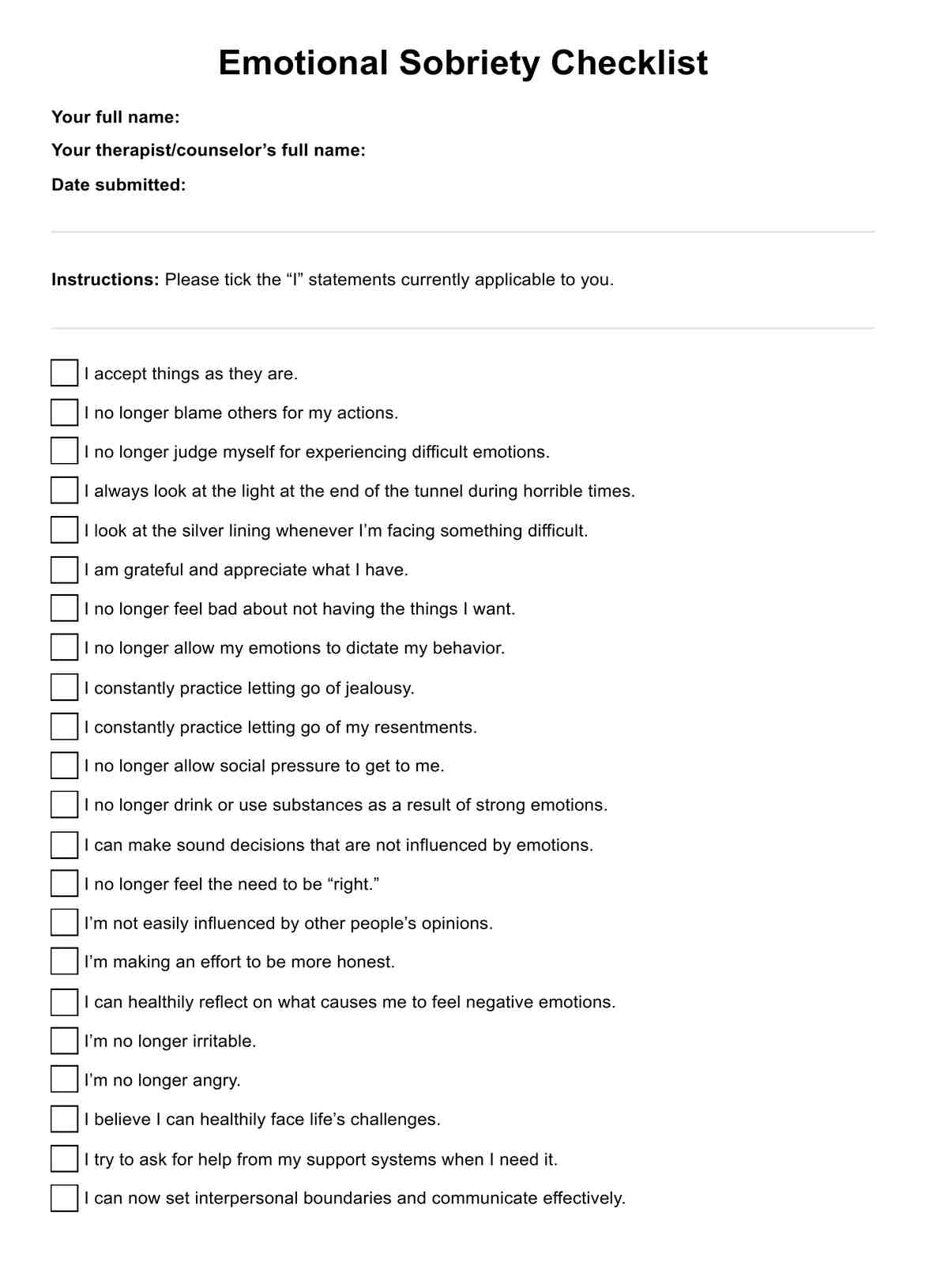It depends on how long your therapy or counseling program is. You can issue this every session to gauge your patient's progress since the previous session. You can issue copies of these for them to send routinely so you can monitor how they’re doing and if there are any significant changes to their emotional sobriety.

Emotional Sobriety Checklist
Learn about Emotional Sobriety Checklists, then download our PDF template and use it for your practice!
Emotional Sobriety Checklist Template
Commonly asked questions
You simply look at what’s been ticked and what hasn’t been ticked. The statements that haven’t been ticked are things you might want to look into as you go through your therapy or counseling program. This checklist has no scoring and designations. It’s meant to show you where your patient is regarding their emotional sobriety.
Yes. Even if you’re not a mental healthcare professional, you can download our template for free! We hope it helps you become more aware of your emotional sobriety. If you feel like you’re not emotionally sober, we recommend seeing a therapist or counselor to help you get to the point where you are emotionally sober.
EHR and practice management software
Get started for free
*No credit card required
Free
$0/usd
Unlimited clients
Telehealth
1GB of storage
Client portal text
Automated billing and online payments











